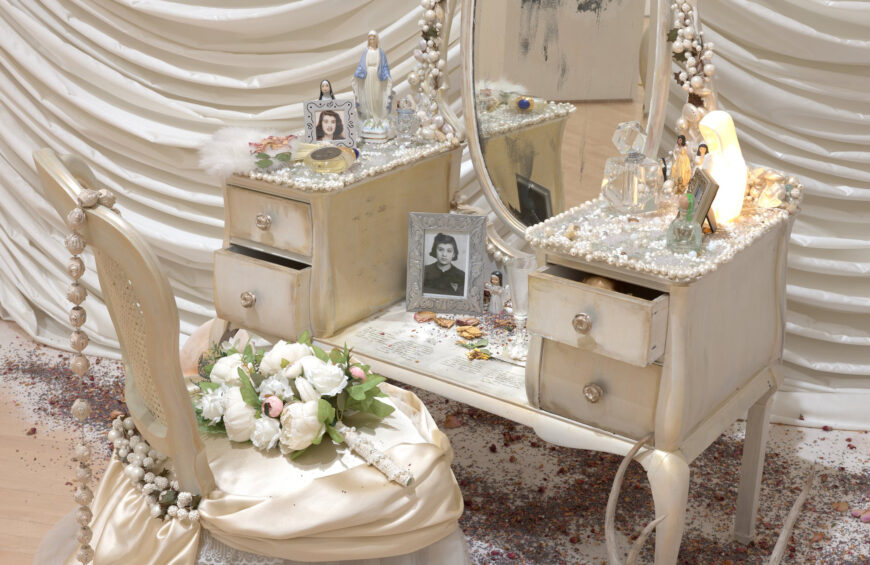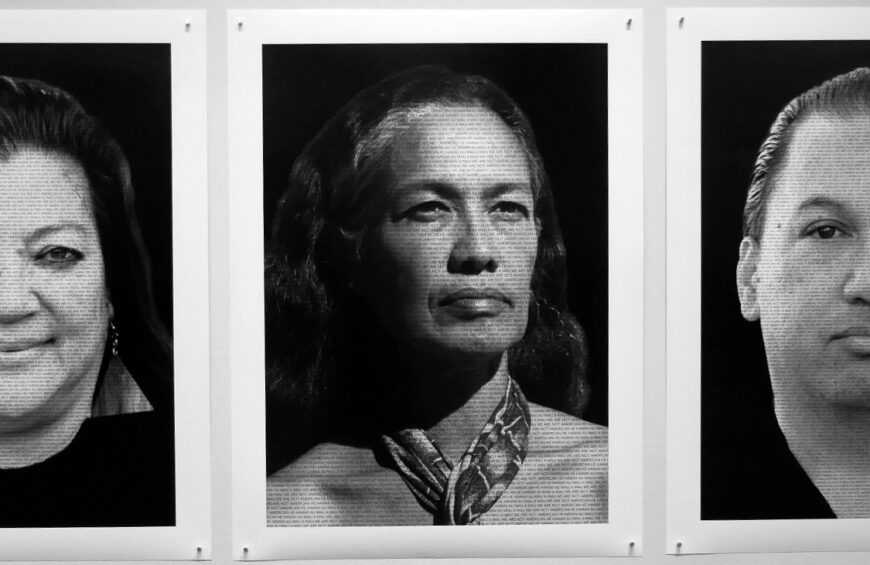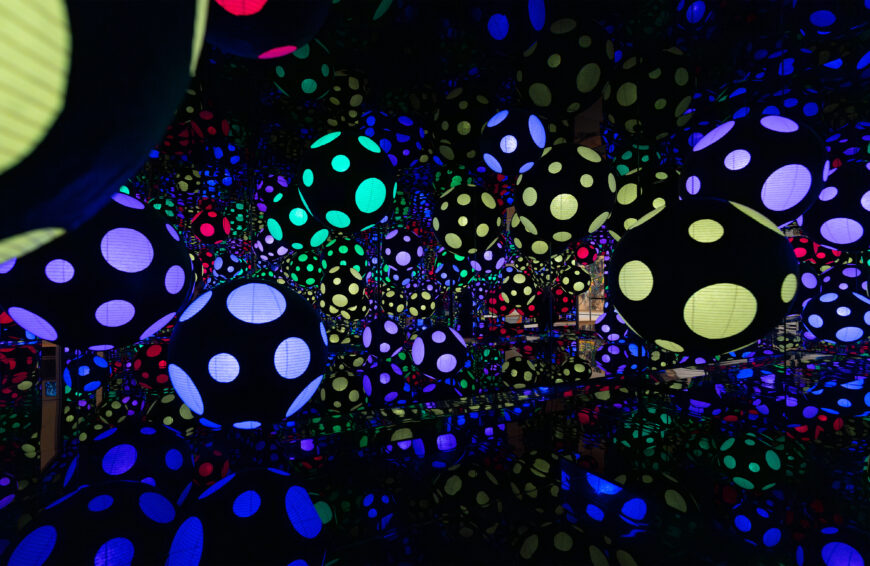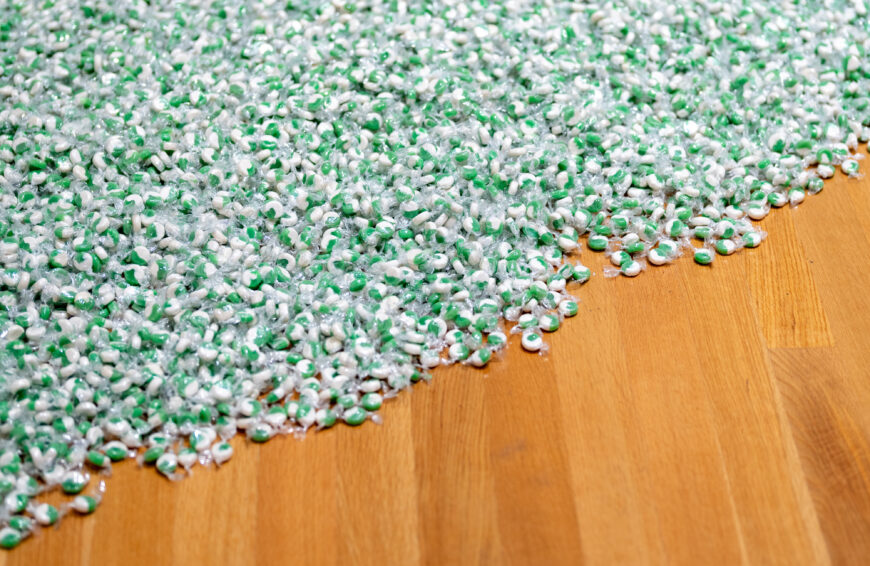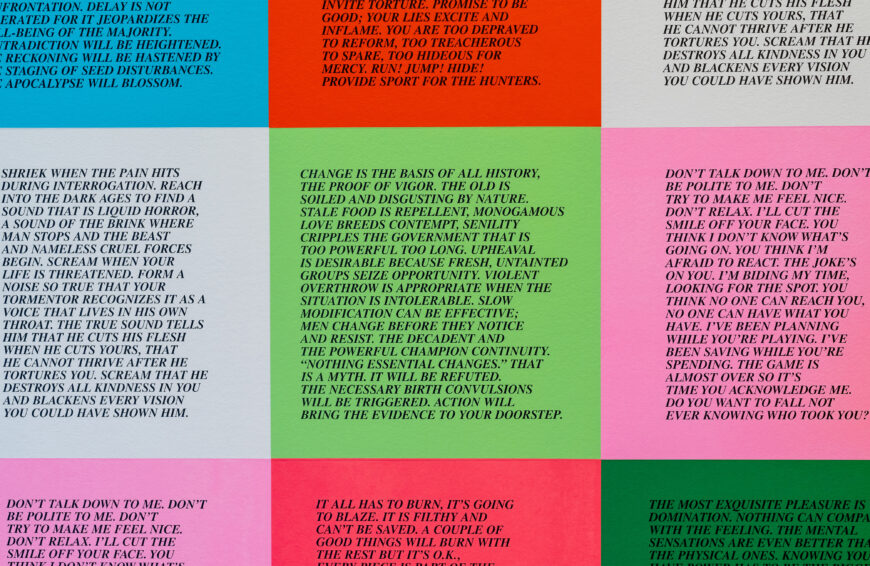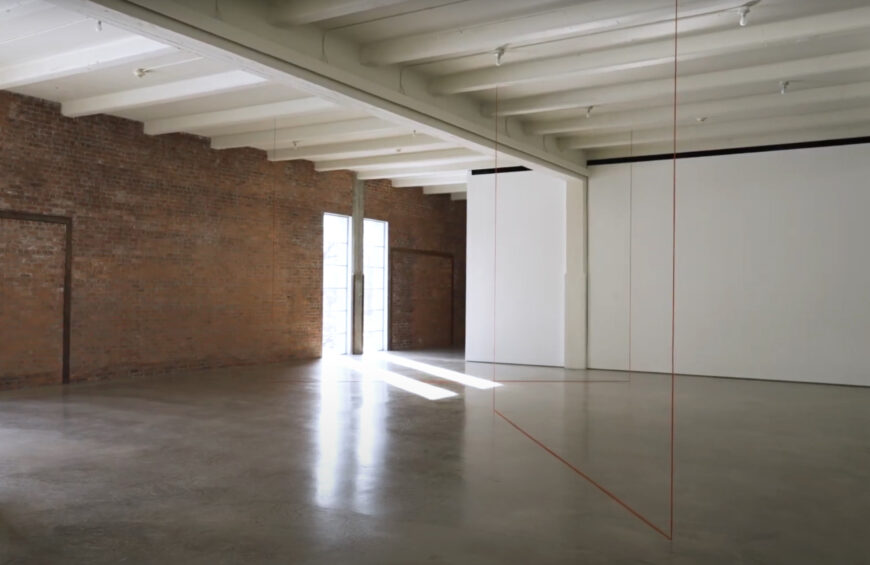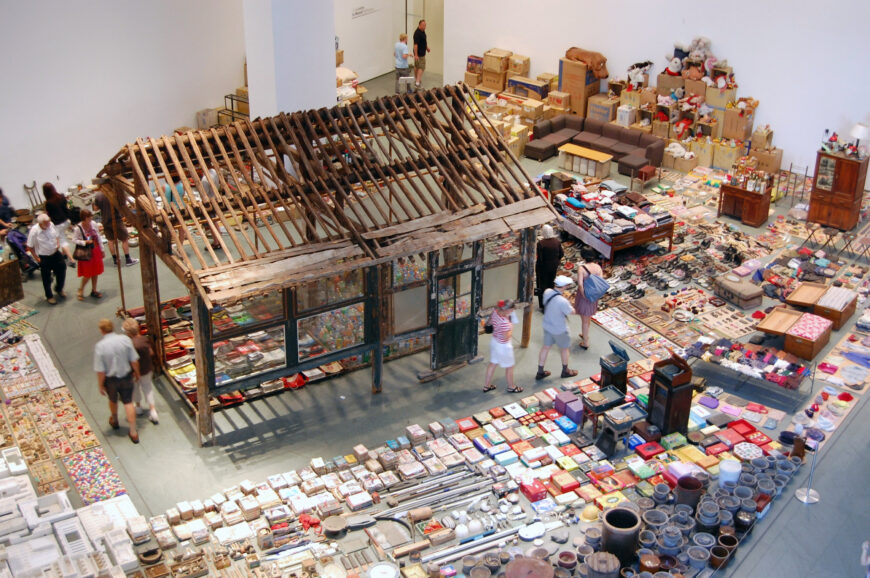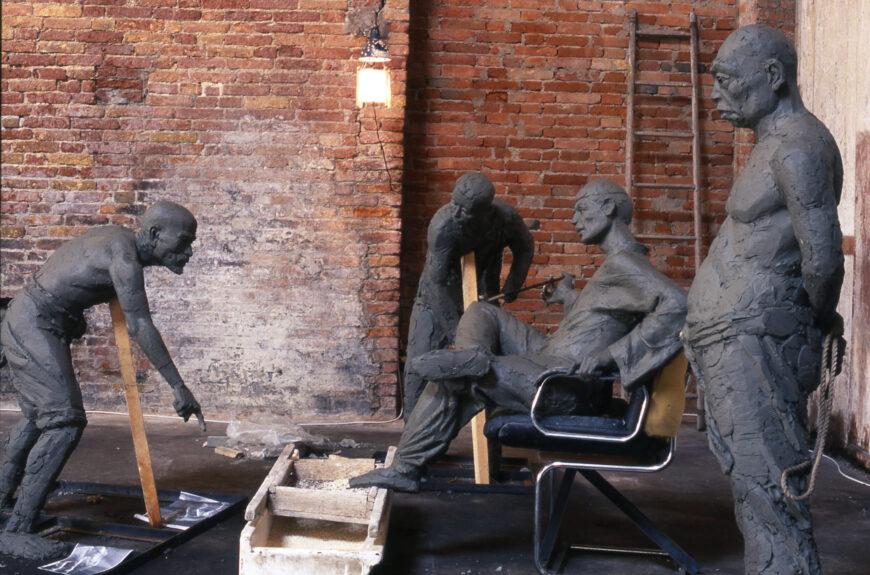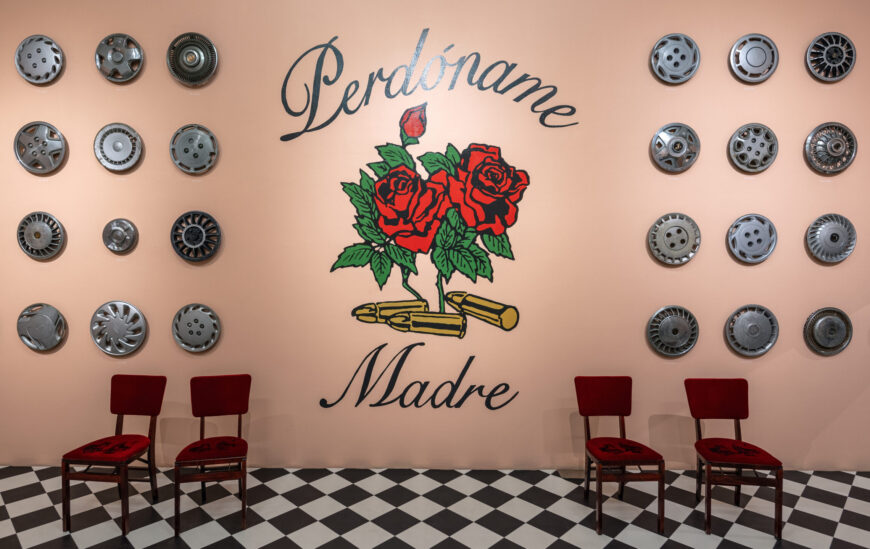Nari Ward, We the People (black version), 2015, shoelaces, 8 × 27 feet (Crystal Bridges Museum of American Art), a Seeing America video
Nari Ward, We the People (black version)
[0:00] [music]
Dr. Steven Zucker: [0:04] We’re in the galleries of the Crystal Bridges Museum of American Art, standing in front of a large, curved, black wall, and coming out of it are shoelaces.
Dr. Mindy Besaw: [0:14] Thousands of shoelaces of all different colors.
Dr. Zucker: [0:17] This is a work of art called “We the People (black version)” by an artist named Nari Ward.
Dr. Besaw: [0:22] These are holes that are drilled directly into the wall, with brightly colored shoelaces sticking out from it.
Dr. Zucker: [0:28] When I first walk in, there’s a moment of confusion. Does it say something? Is there actually writing here?
Dr. Besaw: [0:33] There is writing. This says, “We the People,” in a historic script that would have been penned by the original writers of the US Constitution, so taking those first three words from the preamble.
[0:47] But I’m glad you mentioned the confusion of it. The shoelaces are different lengths, and they’re almost drippy. They drape right off of the wall in a way that is a little bit of an obscurance of “We the People,” to a point that maybe it actually makes you stop and look and consider even more.
[1:08] Who were the people that this was written for? This is all-encompassing. When you’re standing close to this, it makes you part of this.
Dr. Zucker: [1:18] It envelops the person who stands in front of it, but at the same time it feels very public. It’s for a community.
Dr. Besaw: [1:25] The multi-colored shoelaces reference that as well. It’s all the differences of individuals that come together to create and form “We the People.” When Nari Ward was thinking about this work, he was at a residency in Philadelphia, thinking about all of these founding documents of the United States and how it referenced him.
Dr. Zucker: [1:49] Because he’s Jamaican.
Dr. Besaw: [1:50] He is an immigrant. His experience growing up somewhere else and then coming to the United States was part of that consideration of these old documents. In some way, he’s also saying, “We know ‘We the People,’ but do we really know the whole US Constitution and the document this introduces?”
[2:09] When something becomes so common that we don’t pay attention to it or really know it, like the shoestrings that we’re wearing.
Dr. Zucker: [2:17] We all wear shoes. We all have shoelaces. They live with us through our day. We have this multitude of identities, this multitude of people whose shoelaces are coming together to form these words.
Dr. Besaw: [2:29] Shoelaces have a way of crossing even socioeconomic boundaries. Even if you don’t have a lot of money, you may at least have one pair of shoes with shoelaces.
Dr. Zucker: [2:40] Confronted with the multiplicity of shoelaces here, of all of these colors, of references to all of these lived experiences, it stands in such contrast to the very narrow definition of who the people were when this was written. That the suffrage, that voting rights were not accorded to women, to African Americans, were not accorded to the poor who did not own land.
Dr. Besaw: [3:01] To Native Americans. There were so many groups that couldn’t vote.
Dr. Zucker: [3:05] I think it’s easy to forget that the phrase “We the People” was a declaration that the people could rule, that rule did not have to come from the divine right of kings. So although the phrase, “We the People,” although the Constitution itself may seem distant and a document of the 18th century, it was a radical document in its own day.
[3:26] It was this young American nation laying down its founding principles, and what the artist is doing, I think in part by choosing shoelaces, is taking something that is abstract and distant, an idea, and making it immediate and personal and intimate, to make it of the 21st century.
Dr. Besaw: [3:43] The shoestrings look like they could move, they’re almost feathery, they drip, they swirl, they are short and long, some of them stick out at you. That movement is a literal dynamism that’s embodied in the work itself.
Dr. Zucker: [3:59] That the Constitution itself is shaped by our lived experience.
[4:03] [music]
| Title | We the People (black version) |
| Artist(s) | Nari Ward |
| Dates | 2015 |
| Places | North America / United States |
| Period, Culture, Style | Contemporary |
| Artwork Type | Installation |
| Material | String |
| Technique |
Loading Flickr images...


